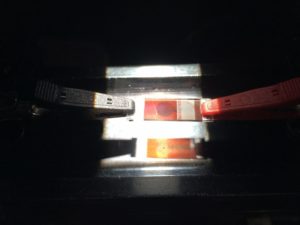
Time to go back to the “glory days” of gas-guzzlers?
Credit: Rudolf Stricker
On February 21, 2017, automakers effectively undermined their own long-term viability by pushing for the loosening of critical fuel economy regulations. While the rest of the world is combating climate change, the U.S. is now backtracking on immense progress made towards staving off the worst effects of climate change, as well as on reductions in local air pollution, dollars saved, and making the auto industry more competitive. Instead, it has shortsightedly thrown this all out the window.
Even if more jobs were created in the short-term (the driving motivation supposedly), gas-guzzling cars that are uncompetitive have no future in the U.S. or abroad. Also, the U.S. has been here before, in 2007, when the automakers were bailed out for making inefficient vehicles that nobody wanted to buy. But the lessons of that era were not learned by anyone in power it seems, and worse, not by the automakers themselves. So when they ask for a […]

The creation process of perovskite solar cells.
Credit: Segawa Laboratory at Tokyo University
Imagine a future when solar cells can be sprayed or printed onto the windows of skyscrapers or atop sports utility vehicles — and at prices potentially far cheaper than today’s silicon-based panels.
It’s not as far-fetched it seems. Solar researchers and company executives think there’s a good chance the economics of the $42 billion industry will soon be disrupted by something called perovskites, a range of materials that can be used to harvest light when turned into a crystalline structure.
The hope is that perovskites, which can be mixed into liquid solutions and deposited on a range of surfaces, could play a crucial role in the expansion of solar energy applications with cells as efficient as those currently made with silicon. One British company aims to have a thin-film perovskite solar cell commercially available by the end of 2018.
“This is the front-runner of low-cost solar cell technologies,” said Hiroshi Segawa, a professor at the […]
 Since the election, Republicans in Congress have launched a sustained attack on America’s national parks and public lands. Starting in January, they wasted no time putting in place new rules and legislation that threaten the future of our national treasures. They launched their assault on their very first day in session, and haven’t stopped.
Since the election, Republicans in Congress have launched a sustained attack on America’s national parks and public lands. Starting in January, they wasted no time putting in place new rules and legislation that threaten the future of our national treasures. They launched their assault on their very first day in session, and haven’t stopped.
- A new rule passed in the House essentially values all public lands at $0, clearing the way for Republicans to put our national resources in corporate hands. Those lands include National Park Service-managed parks and programs that were valued at $92 billion, and pour billions of dollars into local economies.
- Trump instituted a federal hiring freeze, preventing nearly 500 full-time National Park Service jobs from being filled and potentially impacting summer seasonal employment – which means your camping plans may have to be put off indefinitely.
- Utah Republicans passed a resolution for the state’s federal delegation to shrink Grand Staircase-Escalante National Monument, and urged Trump to rescind the Obama order that created Bears Ears National Monument.
- Utah Representative Jason Chaffetz introduced […]
Stephan: Let's bring wealth disparity into a clearer focus. Financial reports released by the Trump administration indicate that 27 staffers who work for him are worth a combined $2.3 billion thanks to real estate, investments and hefty salaries. (emphasis added)
Financial reports released by the Trump administration indicate that 27 staffers who work for him are worth a combined $2.3 billion thanks to real estate, investments and hefty salaries. (emphasis added)
How much is $2.3 billion? Here’s one way to look at it. Consider the amount of money earned in any county in the country in a year — the number of households in each county times the average household income in the county. In 80 percent of the counties in America, every household combined earns less than $2.3 billion a year. In counties that voted for Donald Trump, that figure is higher: In 86 percent of Trump counties, the total amount of income earned in a year is less than $2.3 billion. (On average, it’s $2.1 billion, using 2011 to 2015 five-year estimates from the Census Bureau.)
Only 8 percent of Trump-voting counties have a cumulative annual income greater than the $3.9 billion Forbes says the president himself is worth. Only 2 percent earn more annually than the $10 billion Trump claims to be worth.
This, of course, falls into the […]











